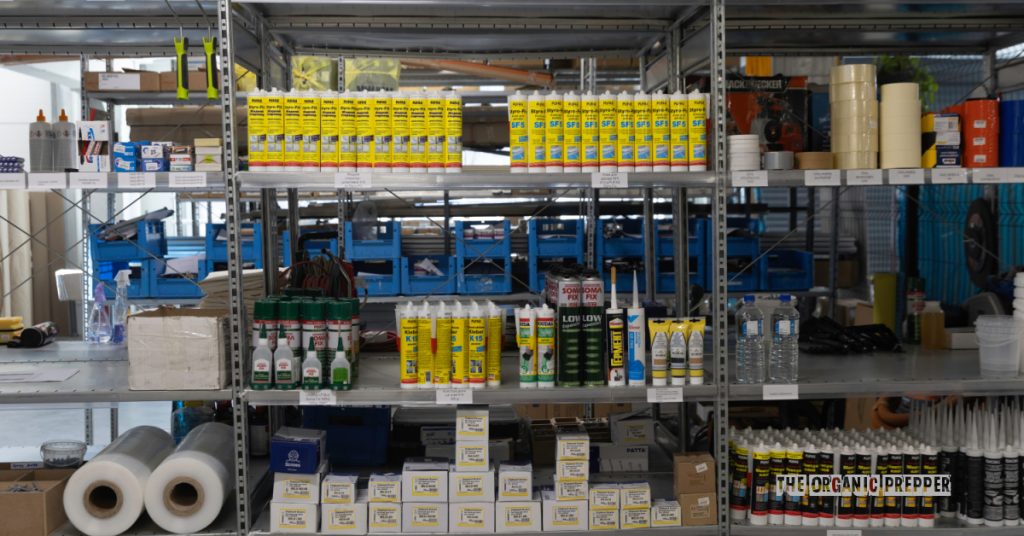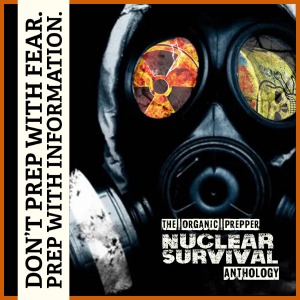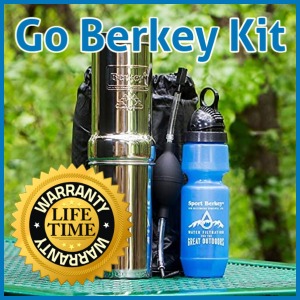If you're new here, you may want to subscribe to my RSS feed. Thanks for visiting!
Dear readers, by now, I believe we could fill whole books with the things we think are granted.
The multitude of products in our daily lives is made possible by a complex system of interconnected industries. Notably, glues, adhesives, and sealants serve as essential materials for countless applications. All of us DIY people know it.
It’s widely understood that, in a worst-case scenario occurring within the next ten years, or possibly sooner, based on what I saw last year, current stockpiles will be depleted rapidly.
The facilities required to produce these items are incredibly complex, relying on an extensive network of interconnected sub-branches within the petrochemical industry. While returning to traditional methods holds appeal for those who experienced the craftsmanship of hand-made boots in the 1960s, 1970s, or even the 1980s, modern industry, much of it now based overseas, has taken over these specialized areas…with the known impacts on the price (and the quality). Consequently, should future manufacturing lines face significant disruption due to a major global event, such as a potential extended conflict, we would find ourselves woefully unprepared to bind even the simplest objects. The ready availability of glues and sealants, a convenience we currently take for granted, would become nothing but a forgotten luxury.
Scarcity shows up in unexpected places.
Mind you, the inspiration behind advocating for this article comes from my personal experiences with scarcity in Venezuela over the past several years. This isn’t just a theoretical concern; it mirrors the hardships we faced once access to essential items became limited or disappeared entirely.
We witnessed firsthand the fragility of supply chains and the impact of economic instability on the availability of seemingly mundane products.
What many in more stable economies might take for granted – a simple tube of glue to fix a broken item, a reliable sealant to weatherproof a home repair – can become increasingly difficult to obtain and, at times, completely unavailable, in a blink.
How do I know this? Because we lived it.
By now, you should know that we have experienced shortages of food, medicine, household goods, and crucial construction materials in this country. Things have changed, with all sorts of imported products, as our national industry is (almost) kaput except for a few exceptions, but people barely can afford what they need. That’s why there is an excess of products.
I was getting some tint for a wooden piece I was cutting on my CNC machine when one employee told me that there was a time when even wood glue was rationed.
This prolonged crisis has fostered a deep understanding of the importance of resourcefulness and the need to extend the lifespan of everything we have. It has forced us to adopt a mindset of “making things work with less” and maximizing the utility of every item.
The inability to easily replace things amplifies the importance of keeping what we have in good working order for as long as possible.
The Importance of Stockpiling Adhesives and Sealants
Therefore, I hope that an article dedicated to glues, adhesives, and sealants will serve as a practical guide to preserve them, drawing on knowledge and techniques that can help extend the life of these vital materials. This isn’t just about saving money; it’s about building resilience to face potential future shortages. My experience in Venezuela worked to indicate to me how critical the role these often-overlooked items play, and the impact their scarcity can have.
Once this scarcity settles, the trend will be toward recovering long-lost skills and the rudimentary materials our ancestors relied upon. Here is where the ones with access to new technologies developed in the last 25 years will have an edge. For instance, if you own a 3D printer and are skilled enough to use it for valve cover gaskets, you are one step ahead. You will be able to optimize your design, and can even become a provider.
The Challenges of Remote Living
Living in a remote rural area, far from urban centers, presents unique challenges when maintaining and repairing essential items. From shoes and machinery to vehicles and household appliances, the ability to quickly and effectively fix things is crucial for self-sufficiency and survival. In such environments, having a well-stocked supply of adhesives and sealants is not just a convenience; it’s a necessity.
Remote rural living (which will be one of the compromises with comfort that will have to do, once the moment comes) often means limited access to stores and repair services. A trip to the nearest town for a tube of glue or a replacement gasket can take hours, if not days, and may be hindered by weather conditions or road closures.
This level of isolation underscores the importance of being prepared for any eventuality, including unexpected breakdowns and the need for immediate repairs.
The Versatility of Adhesives and Sealants
Adhesives and sealants are incredibly versatile tools that work to fix a wide range of items. From mending torn leather boots and patching punctured tires to sealing leaky pipes and repairing broken machinery parts, water tanks, and sheds, these products offer a quick and effective solution for countless repair needs.
When stocking up on adhesives and sealants, you need to consider the specific needs of your rural environment. There is no “one size fits all” here.
Bonus tip: If you intend to build a camper trailer, avoid openings on the roof where you may need sealant in a few more years. Use the sides instead, as their heat signature is much lower and easier to conceal.
Some essential items to include are:
- Super glue (cyanoacrylate): A fast-acting adhesive that bonds to different materials, including plastics, rubber, and metal.
- Epoxy: A two-part adhesive that creates a strong, durable bond on almost any surface, including wood, metal, concrete, and ceramics.
- Contact cement: A flexible adhesive that bonds instantly on contact, ideal for repairing leather, rubber, and fabrics.
- Silicone sealant: A waterproof and heat-resistant sealant that can seal gaps and cracks around windows, doors, pipes, and other surfaces.
- Threadlocker: An anaerobic adhesive that prevents nuts and bolts from loosening due to vibration, essential for maintaining machinery and vehicles. Inevitable if you want, for some modern machinery that demands it in the workshop manual.
- Rubber cement: A flexible adhesive that bonds well to paper, cardboard, and other lightweight materials, for crafting and general repairs.
- Patch kits: Pre-packaged kits containing patches and adhesive for repairing punctures in tires, inner tubes, and inflatable items.
Proper Storage for Longevity – Maintenance Conditions and Estimated Shelf Life
- Super Glue (Cyanoacrylate):Conditions: Store in a cool, dry place, away from direct sunlight. Keep the container tightly closed to prevent air from hardening it.
- Estimated shelf life: 6-12 months.
- Epoxy:Conditions: Store in a cool, dry place, avoiding extreme temperatures. Ensure components A and B are tightly sealed.
- Estimated shelf life: 12-24 months.
- Contact Cement:Conditions: Store in a cool, well-ventilated area, away from heat sources and flames. Keep the container tightly closed.
- Estimated shelf life: 12-18 months.
- Silicone Sealant:Conditions: Store in a cool, dry place, avoiding freezing. Keep the tube sealed or with the nozzle capped.
- Estimated shelf life: 12-36 months.
- Threadlocker:Conditions: Store in a cool, dry place, away from direct sunlight. Keep the container tightly closed.
- Estimated shelf life: 12-24 months.
- Rubber Cement:Conditions: Store in a cool, dry place, away from heat sources. Keep the container closed to prevent evaporation.
- Estimated shelf life: 6-12 months.
- Patch Kits:Conditions: Store in a cool, dry place, protecting the adhesive from direct sunlight and extreme temperatures.
- Estimated shelf life: 12-24 months.
General Considerations
- Temperature: Most adhesives and sealants prefer temperatures between 15°C and 25°C (59°F and 77°F).
- Humidity: High humidity can negatively affect some adhesives.
- Air Exposure: Air can harden or thicken many products. Keep containers tightly closed. We can´t explain how important this is. The air down here is so humid that damages your product even before the expiration date. Modern chemicals are not designed for long-term storage and in the industry, I saw industrial bonding agents going bad, even though they were stored in a conditioned shipping container. If you have a vacuum sealer machine, go for it!
- Shelf life: Be aware of the shelf life of each product and replace them as needed. This is a good research topic, indeed. I‘d love to know if some product out there, maybe with two or three components is highly shelf-stable in time. I know that nowadays there are products with remarkable capabilities but don’t have first-hand information about this parameter, and the industrial products are cost-prohibitive.
- Organization: Store your adhesives and sealants in a well-organized manner, so you can easily find what you need when you need it.
Beyond Repairs: Creative Uses for Adhesives and Sealants
In addition to their practical uses for repairs, adhesives, and sealants can be used creatively in a rural setting. For example:
- Creating custom gaskets and seals for machinery and equipment. (I’m going to expand a little about this soon enough)
- Repairing and reinforcing tools and equipment handles. I’m sick and tired of seeing poorly repaired handles. This can lead to injuries and we can’t afford this when medical attention is uncertain.
- Crafting and building projects, such as chicken coops, feeders, and other production structures.
- Sealing and waterproofing containers, windows, door jams, and gaps in storage areas to keep insects and rodents out.
Generally speaking, solvent-free two-component epoxy glues, stored in sealed containers under proper conditions (without extreme temperatures or air exposure), have a good shelf life.
While over time the resin might crystallize or the hardener might turn yellowish, this does not necessarily affect their performance. However, if the material is older than a year, it’s recommended to do a test cure to ensure it still works correctly. Some manufacturers suggest a reference shelf life of about 24 months to guarantee optimal quality, but theoretically, if the components remain isolated and in good condition, they could last longer.
However, getting accurate numbers for a shelf life here is uphill.
Mind you, mankind made it without these chemicals for a long time; with the current knowledge database, there is much we can do, given the need.
Rest assured, I will be working in the future to expand this topic.
I extend our sincere gratitude to those sending donations; your generous support is essential in helping our family through this time.
Now let’s see your comments!
Stay safe, and keep tuned!
J.
What about you?
Are there other adhesives that you use frequently? Do you agree with Jose’s suggestions? Let’s talk about it in the comments section.
About Jose
Jose is an upper middle class professional. He is a former worker of the oil state company with a Bachelor’s degree from one of the best national Universities. He has an old but in good shape SUV, a good 150 square meters house in a nice neighborhood, in a small but (formerly) prosperous city with two middle size malls. Jose is a prepper and shares his eyewitness accounts and survival stories from the collapse of his beloved Venezuela. Jose and his younger kid are currently back in Venezuela, after the intention of setting up a new life in another country didn’t go well. The SARSCOV2 re-shaped the labor market and South American economy so he decided to give it a try to homestead in the mountains, and make a living as best as possible. But this time in his own land, and surrounded by family, friends and acquaintances, with all the gear and equipment collected, as the initial plan was.
Follow Jose on YouTube and gain access to his exclusive content on Patreon. Donations: paypal.me/JoseM151
















2 Responses
I have astound thirty of those little one use metal superglue squeeze things, just nice to have,
plus a few of the larger ones.- they should be sealed in a small airtight container.
My 2oz wood glue bottles are vacuum sealed individually so they last a lot longer on my shelf because they cannot dry out like they would in the open..
vacuum sealing individual epoxy tubes has helped me but it only adds a couple months on storage life for me.
I don;t want to experiment on vacuum sealing caulk tines, too expensive.
Very useful info.